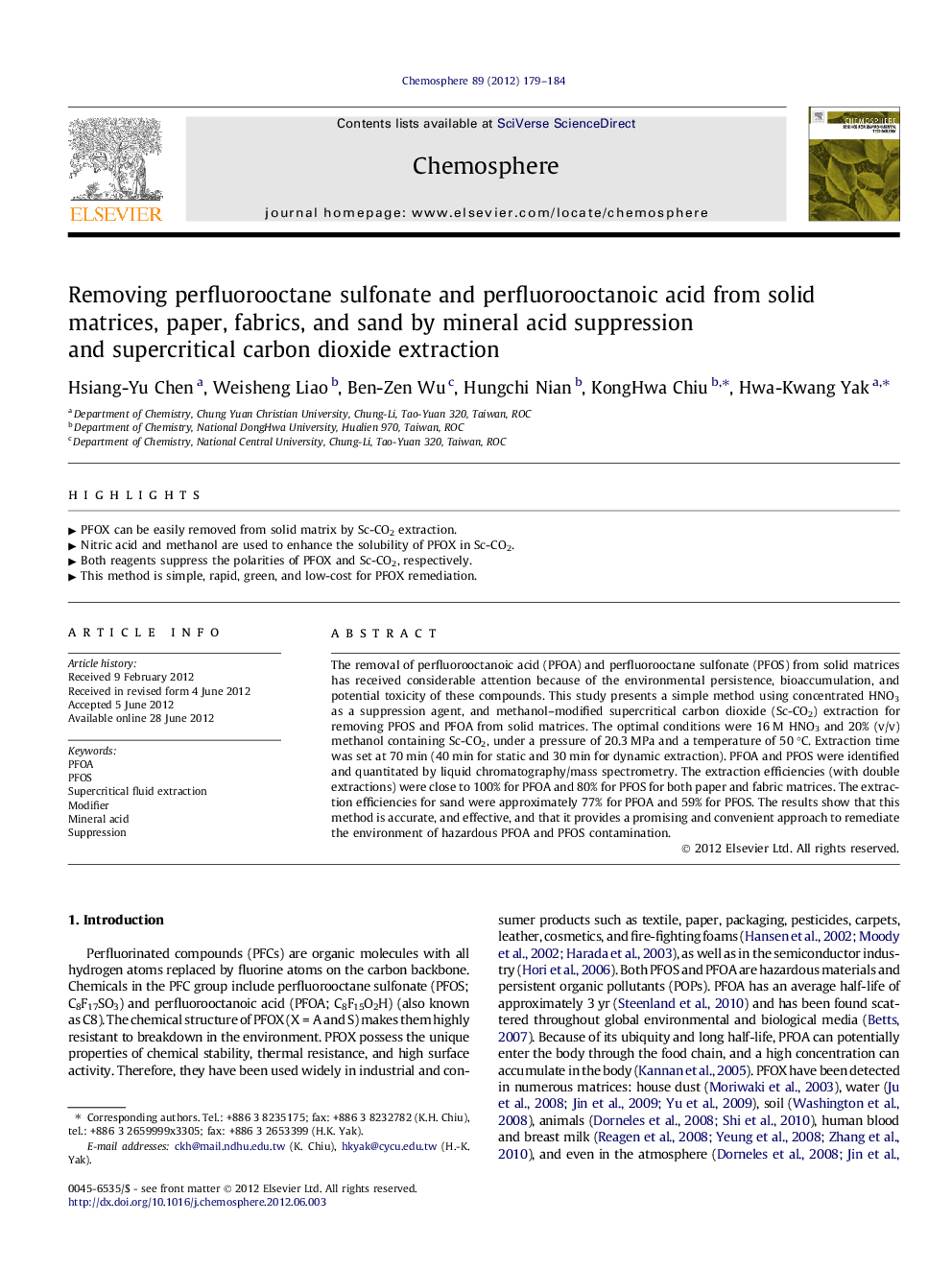| Article ID | Journal | Published Year | Pages | File Type |
|---|---|---|---|---|
| 4409974 | Chemosphere | 2012 | 6 Pages |
The removal of perfluorooctanoic acid (PFOA) and perfluorooctane sulfonate (PFOS) from solid matrices has received considerable attention because of the environmental persistence, bioaccumulation, and potential toxicity of these compounds. This study presents a simple method using concentrated HNO3 as a suppression agent, and methanol–modified supercritical carbon dioxide (Sc-CO2) extraction for removing PFOS and PFOA from solid matrices. The optimal conditions were 16 M HNO3 and 20% (v/v) methanol containing Sc-CO2, under a pressure of 20.3 MPa and a temperature of 50 °C. Extraction time was set at 70 min (40 min for static and 30 min for dynamic extraction). PFOA and PFOS were identified and quantitated by liquid chromatography/mass spectrometry. The extraction efficiencies (with double extractions) were close to 100% for PFOA and 80% for PFOS for both paper and fabric matrices. The extraction efficiencies for sand were approximately 77% for PFOA and 59% for PFOS. The results show that this method is accurate, and effective, and that it provides a promising and convenient approach to remediate the environment of hazardous PFOA and PFOS contamination.
► PFOX can be easily removed from solid matrix by Sc-CO2 extraction. ► Nitric acid and methanol are used to enhance the solubility of PFOX in Sc-CO2. ► Both reagents suppress the polarities of PFOX and Sc-CO2, respectively. ► This method is simple, rapid, green, and low-cost for PFOX remediation.
